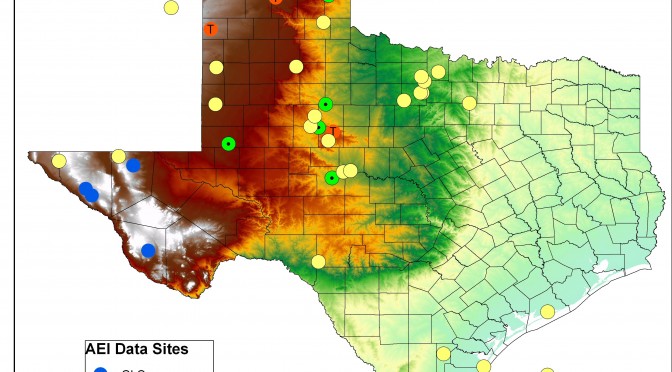The Wind Energy Center, a part of the Texas A&M Energy Institute housed in the Texas A&M Engineering Experiment Station, will join several other universities and corporations in playing integral roles in the Gulf Offshore Wind (GOWind) Project, which is projected to be the most innovative wind farm built to date and will generate power at peak demand and high capacity.
Just before Christmas the project was awarded $50 million in public funding and about $17 million in private funding, Pappas said. About $4 million of that will go to Texas A&M, he said, for the innovation portion of the project.
The goal of the GOWind project, Pappas said, is to build an 18 megawatt offshore wind farm near Brownsville, about 6 miles from South Padre Island, that will drive down the cost of energy produced by offshore wind.
Growth in the Rio Grande Valley is stunted “because it’s behind what’s called a congestion point and they don’t have a lot of native power generation,” Pappas said, “and to bring it in, it costs more.”
In addition to helping meet the Valley’s power demands, the project will create 600 jobs spread among College Station, Austin and the Valley. “And if we build the first phase of it,” Pappas added, “we’re going to create 1,000 jobs.”
Led by the Wind Energy Center, the team assembled for the project includes Texas A&M’s departments of petroleum engineering, electrical and computer engineering, aerospace engineering, and various entities within the University of Texas, Texas Tech University, Texas A&M University-Corpus Christi and the University of Texas at Brownsville.
Baryonyx Corp. of Austin is also part of the project, and has been invited to negotiate a contract with the U.S. Department of Energy for an award under the Wind and Water Energy Program.
Pending results of environmental and feasibility analyses, the wind farm will eventually be installed offshore.
“There are people who are concerned, obviously, about migrating birds, aquatic life, fisherman’s rights. All of these issues have to be addressed and evaluated, perhaps mitigated depending on what we find out.”
The benefits of the wind energy project, however, may outweigh the costs.
“The wind farm doesn’t emit any pollutants, doesn’t use a fuel, and it’s not subject to the volatility of fuel prices,” Pappas said. “As technology begins to mature at a commercial scale, not only will we be competitive in a new power generation, we’ll be competitive with existing plants.”
Gary Gu, a graduate student in electrical and power engineering at Texas A&M, has been working on renewable energy projects for three years.
He said research in the field and projects like GOWind are essential for long-term sustainability.
“I believe first of all it is not just for research — it is determining the future of the human being,” Gu said. “Nowadays conventional resources are very environmentally unfriendly … Wind is everywhere and solar is everywhere. We want to have our children breathe fresh air and drink fresh water, and leave a clean environment rather than a highly polluted one.”
Pappas said he’s ready for the project to begin, and he’s most excited about collaborating with other universities.
He said landing the project was not an easy task, having competed with seven other research teams.
“The reason we got this is because of Texas A&M’s reputation and background in offshore engineering and engineering in general,” Pappas said.
http://energyengineering.org/wind
By Brooke West, http://www.theeagle.com



